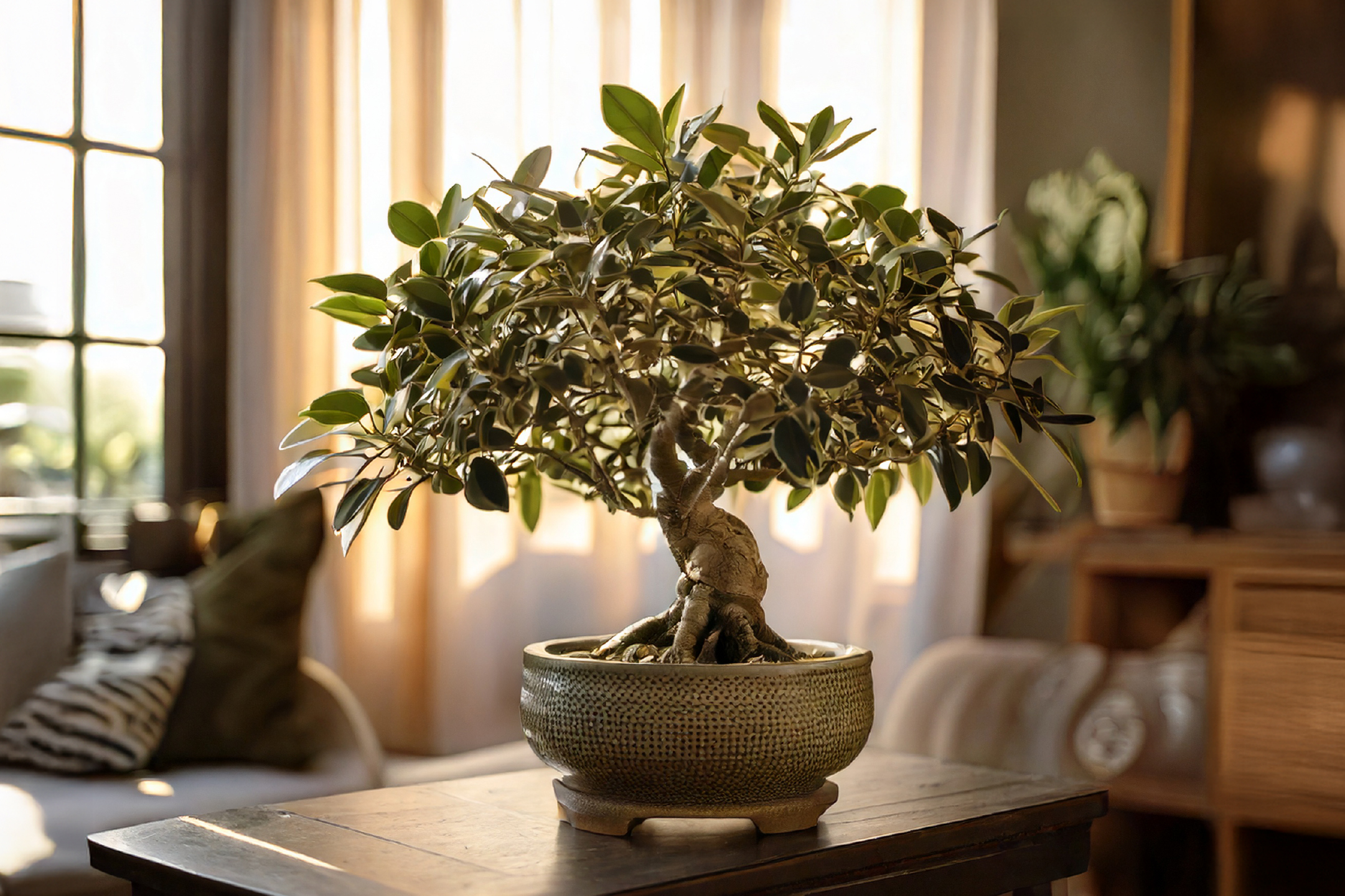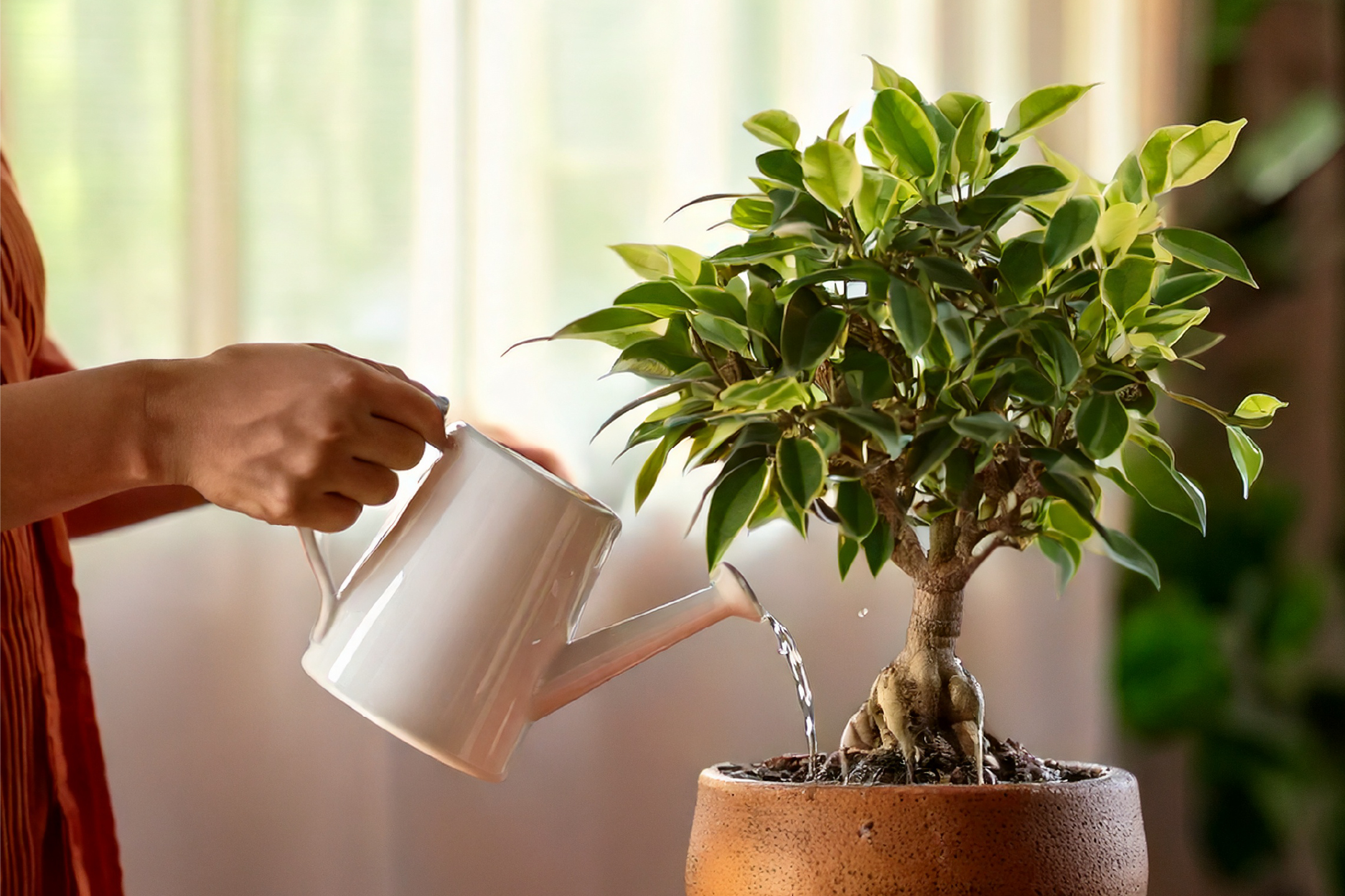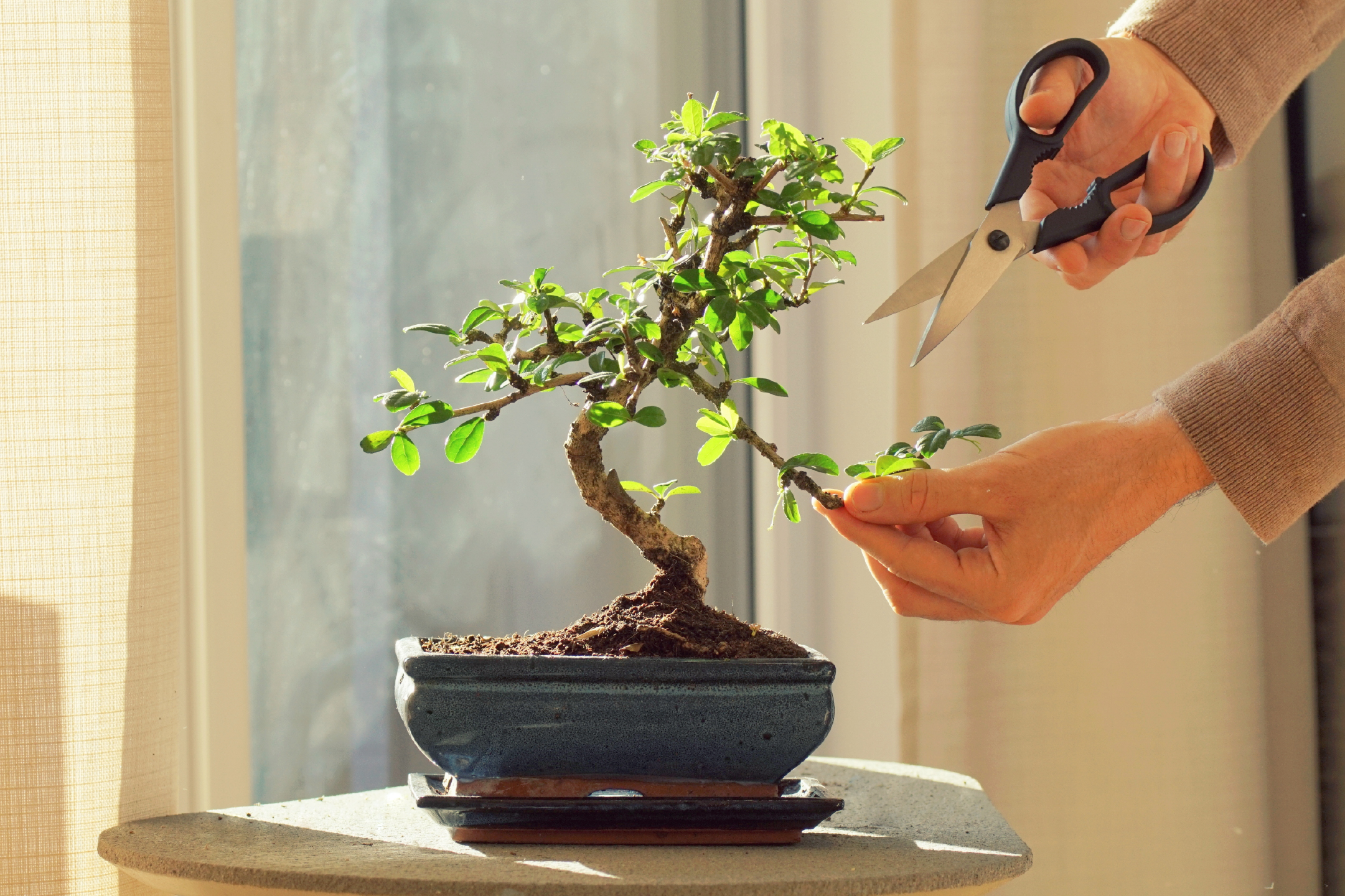.jpg)
Have you ever dreamed of having a tiny tree that looks like it holds centuries of wisdom? Meet the ficus bonsai plant, the ultimate green companion that brings an air of elegance and tranquility to any space. If you’re intrigued by the idea of nurturing a miniature masterpiece, buckle up as we dive into the whimsical world of the Ginseng Ficus Bonsai—from planting to perfecting its care!
Getting to Know the Ginseng Ficus Bonsai
The ficus bonsai plant (Ficus microcarpa 'Ginseng') is an easy-to-care-for bonsai with thick, exposed roots resembling ginseng. These roots give it a sturdy yet whimsical appearance, making it a favorite among bonsai lovers—both beginners and experts alike. Originating from Southeast Asia, this plant is known for its resilience, adaptability, and air-purifying properties.

How to Grow a Ficus Bonsai Plant
1. Choosing the Right Pot and Soil
Your ficus bonsai plant loves well-draining bonsai soil mixed with sand and organic matter. Opt for a shallow bonsai pot with drainage holes to prevent waterlogging. This will ensure that your miniature tree thrives without soggy roots!
2. Perfect Light Conditions
These little green wonders adore bright, indirect sunlight. Place them near a south-facing window or under grow lights if you’re keeping them indoors. If your bonsai isn’t getting enough light, its leaves might start dropping—a sign that it needs a sunnier spot.
3. Watering Like a Pro
Unlike their high-maintenance cousins, ficus bonsai plants are quite forgiving. But they do love consistency! Water them when the topsoil feels slightly dry—about once or twice a week. Too much water can lead to root rot, while too little can make the leaves crisp up.

4. Temperature & Humidity: Keeping It Cozy
Your ficus bonsai thrives in temperatures between 60-75°F (15-24°C). It loves humidity, so misting the leaves occasionally or placing a humidity tray nearby can work wonders!
5. Pruning & Shaping: The Bonsai Artistry
Pruning is where the magic happens! Regular trimming encourages a dense canopy and maintains the plant’s compact size.
- Trim new growth when it extends beyond the desired shape.
- Use bonsai shears to create an elegant form.
- For dramatic styling, consider wiring branches gently to shape them.

Common Problems & Solutions
Yellowing or Dropping Leaves
Cause: Overwatering, underwatering, or low humidity.
Fix: Check the soil moisture and adjust watering accordingly. If the air is too dry, mist the plant more often.
Pests: The Unwanted Guests
Cause: Aphids, scale insects, and spider mites love bonsais too!
Fix: Wipe the leaves with neem oil or an insecticidal soap solution. Keeping your plant dust-free also helps prevent pests.
Leggy Growth (Sparse Leaves)
Cause: Not enough light.
Fix: Move your plant to a brighter spot or use a grow light.
Pruning is where the magic happens! Regular trimming encourages a dense canopy and maintains the plant’s compact size.
- Trim new growth when it extends beyond the desired shape.
- Use bonsai shears to create an elegant form.
- For dramatic styling, consider wiring branches gently to shape them.
Why Choose DeHaat Bageecha Ficus Bonsai?
Looking for a hassle-free way to start your bonsai journey? The DeHaat Bageecha Ficus Bonsai is the perfect pick!
- Pre-styled for elegance – no need to struggle with shaping!
- Low maintenance – ideal for beginners and plant lovers with busy schedules.
- Air-purifying properties – breathe cleaner air with this stylish green companion.
Final Thoughts: Ready to Bonsai?
The ficus bonsai plant is more than just a decorative piece—it’s a living work of art that teaches patience and care. Whether you're a first-time bonsai parent or a seasoned green thumb, this little tree will bring joy, tranquility, and a touch of nature into your home. So, grab your pruning shears, find the perfect spot, and let the bonsai adventure begin!
Happy growing!
FAQs
Q1: Can I keep my ficus bonsai plant outdoors?
A: Yes, but only in warm climates! If temperatures drop below 50°F (10°C), bring it indoors to protect it from cold stress.
Q2: How often should I fertilize my bonsai?
A: Feed your bonsai once a month during spring and summer using a balanced liquid bonsai fertilizer. In fall and winter, cut back to once every 6-8 weeks.
Q3: My ficus bonsai has aerial roots. Is this normal?
A: Absolutely! Aerial roots are a unique feature of the ficus species and add to the bonsai’s charm. If you want more aerial roots, increase humidity levels!
Q4: Can I repot my ficus bonsai?
A: Yes! Repot it every 2-3 years in fresh bonsai soil to prevent root-bound growth and encourage a healthy root system.



